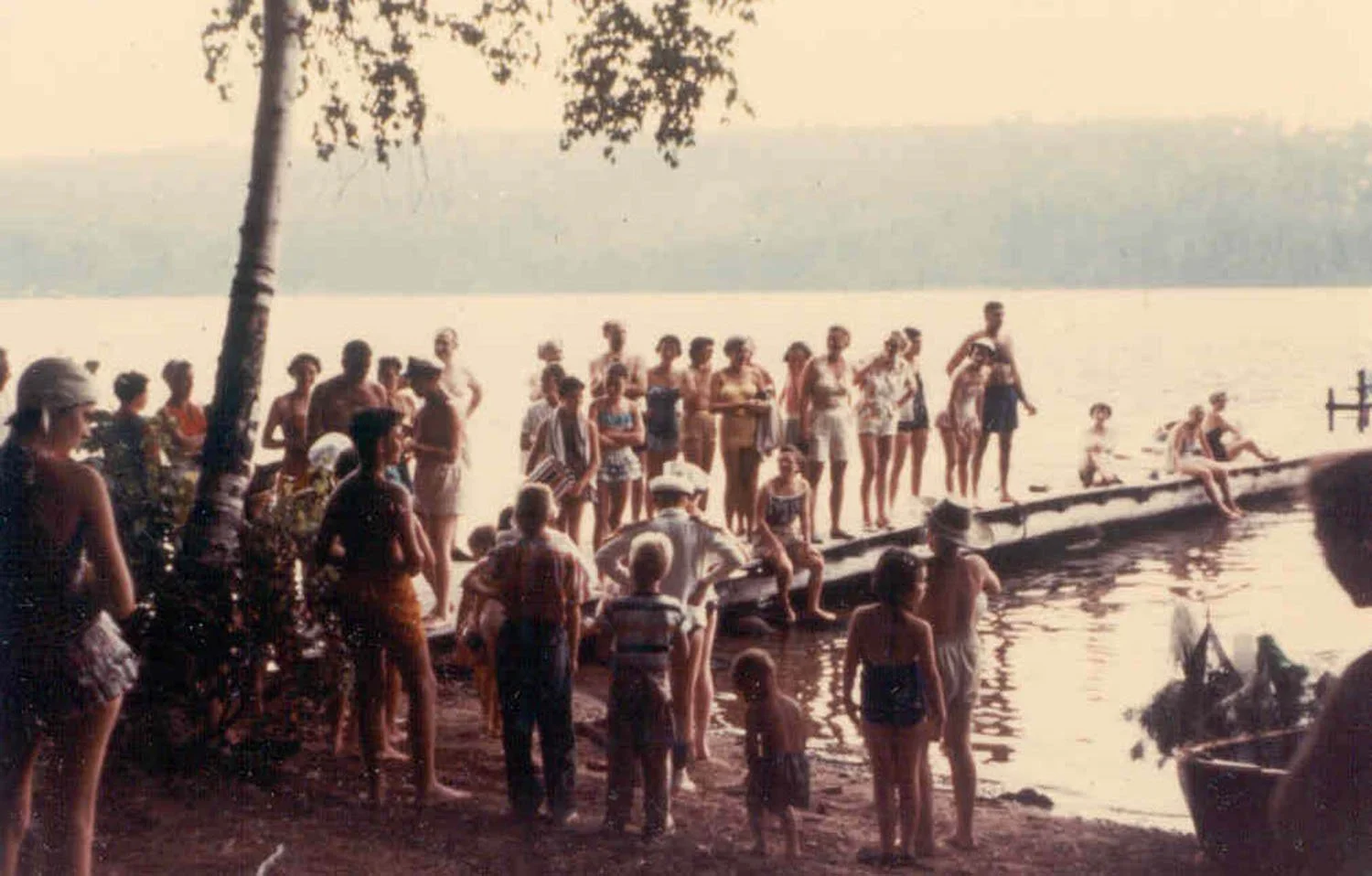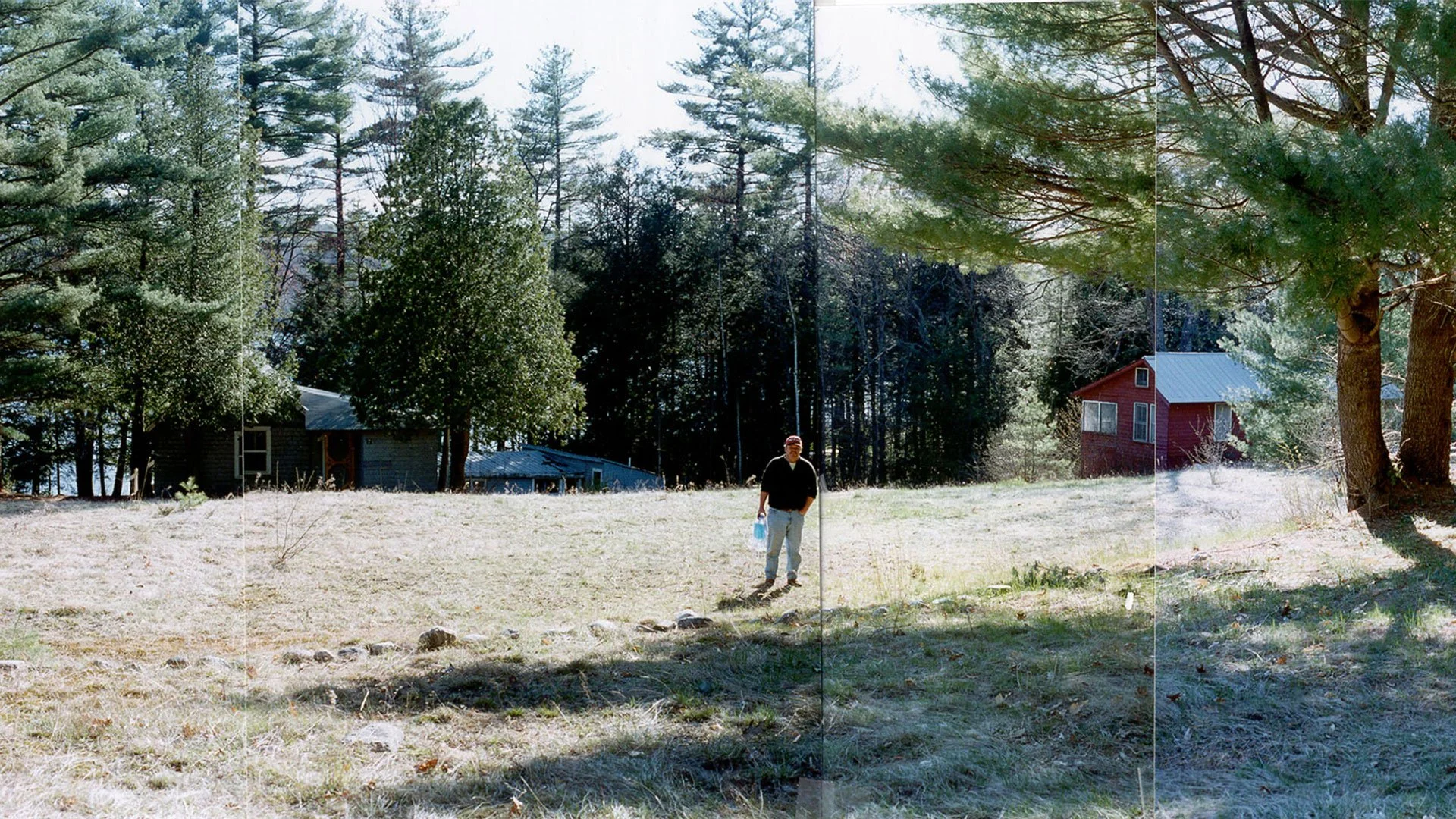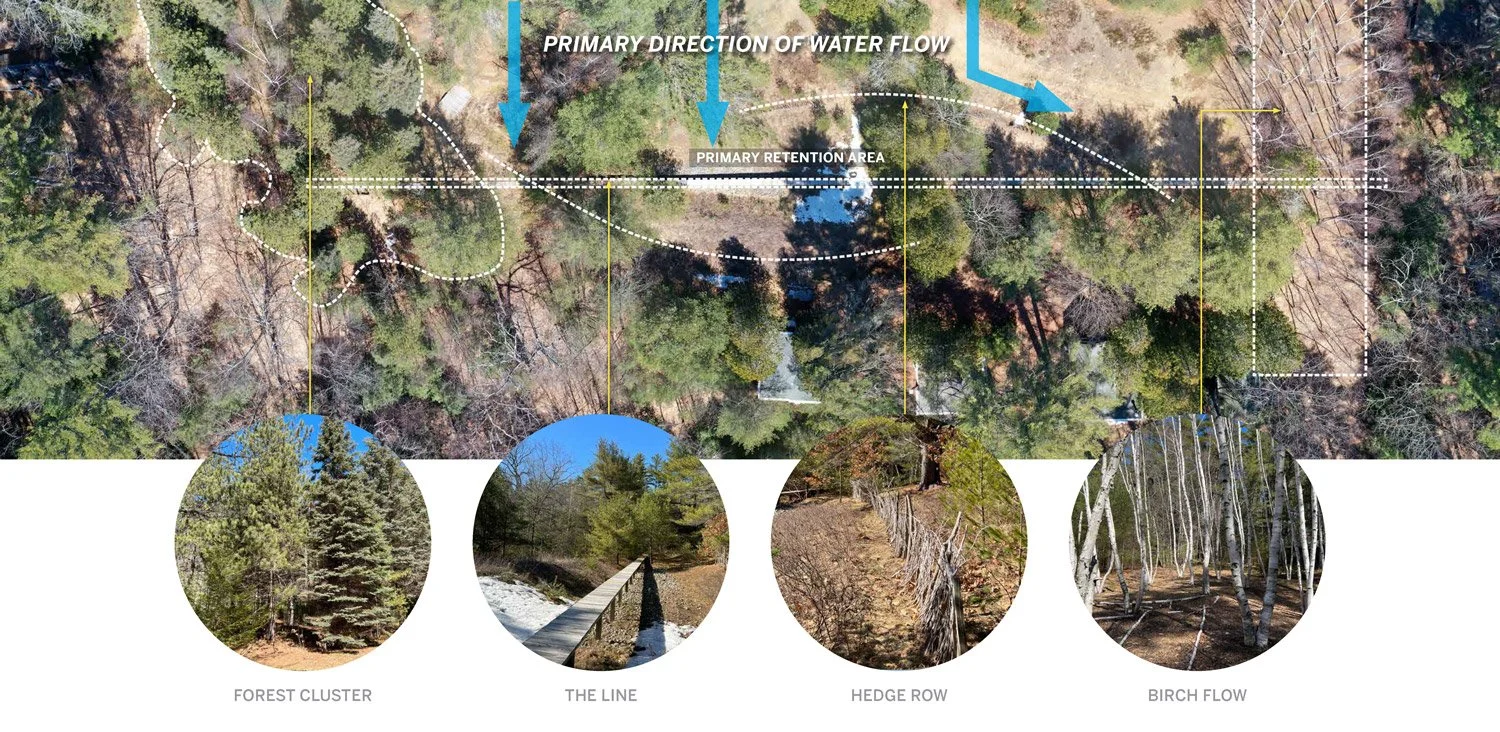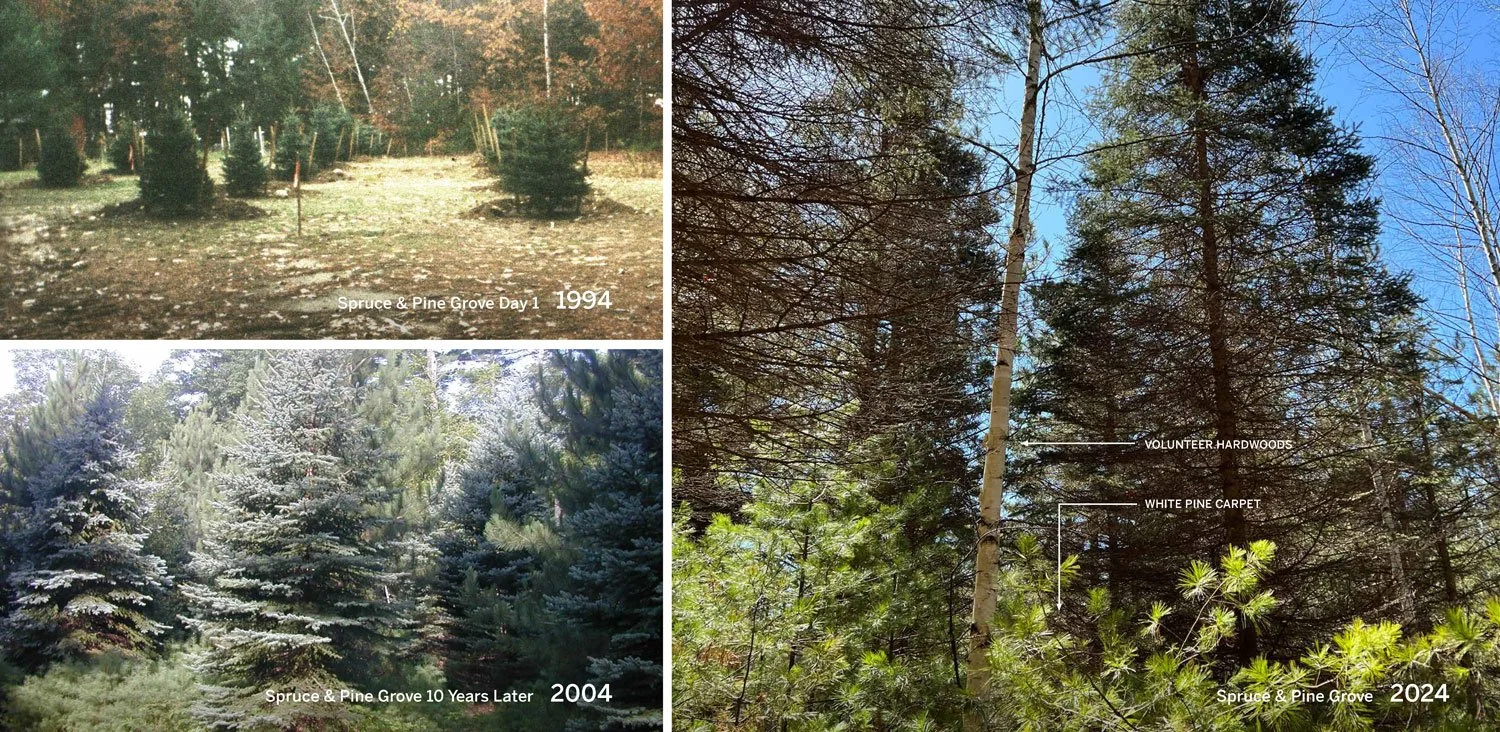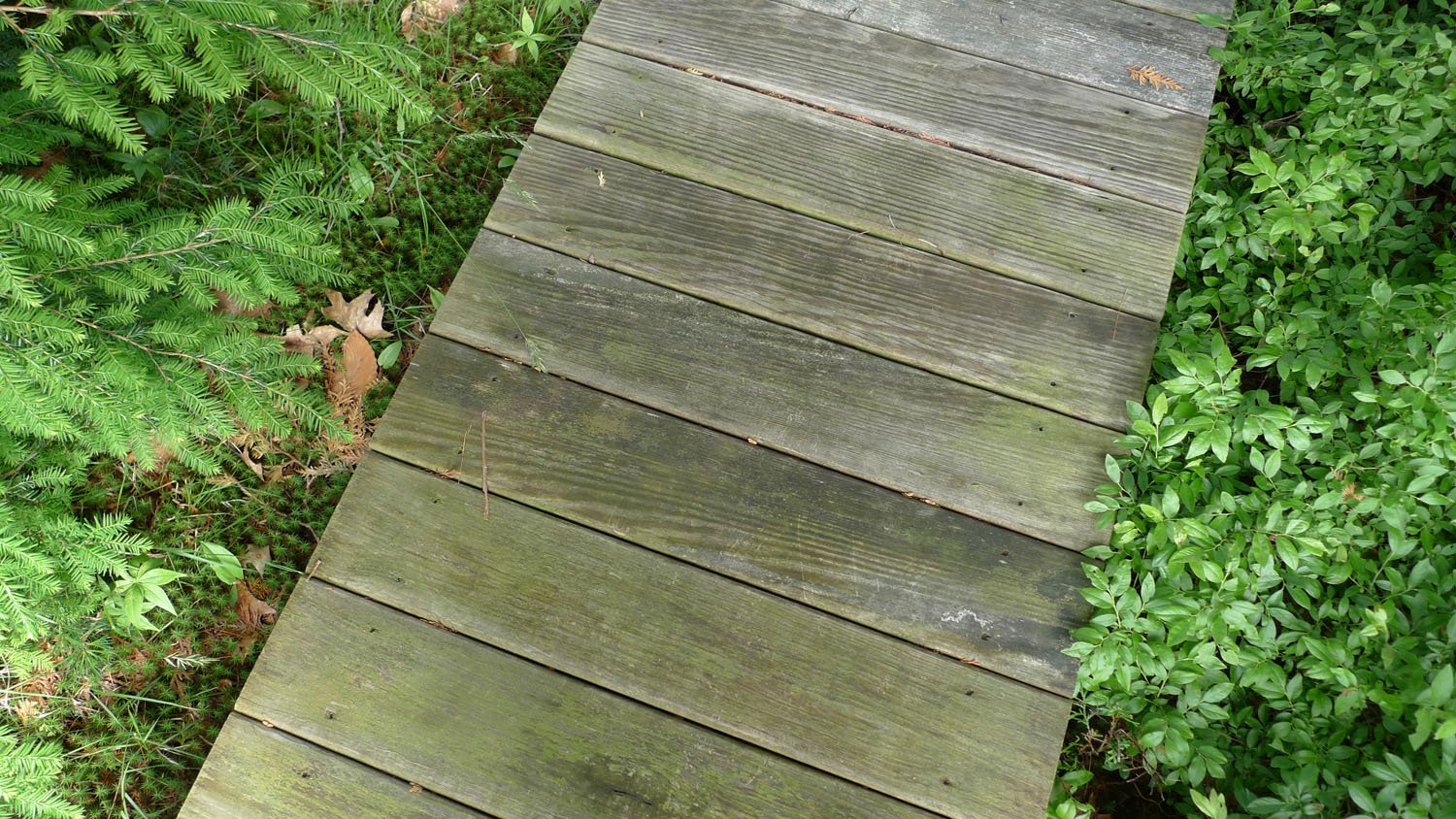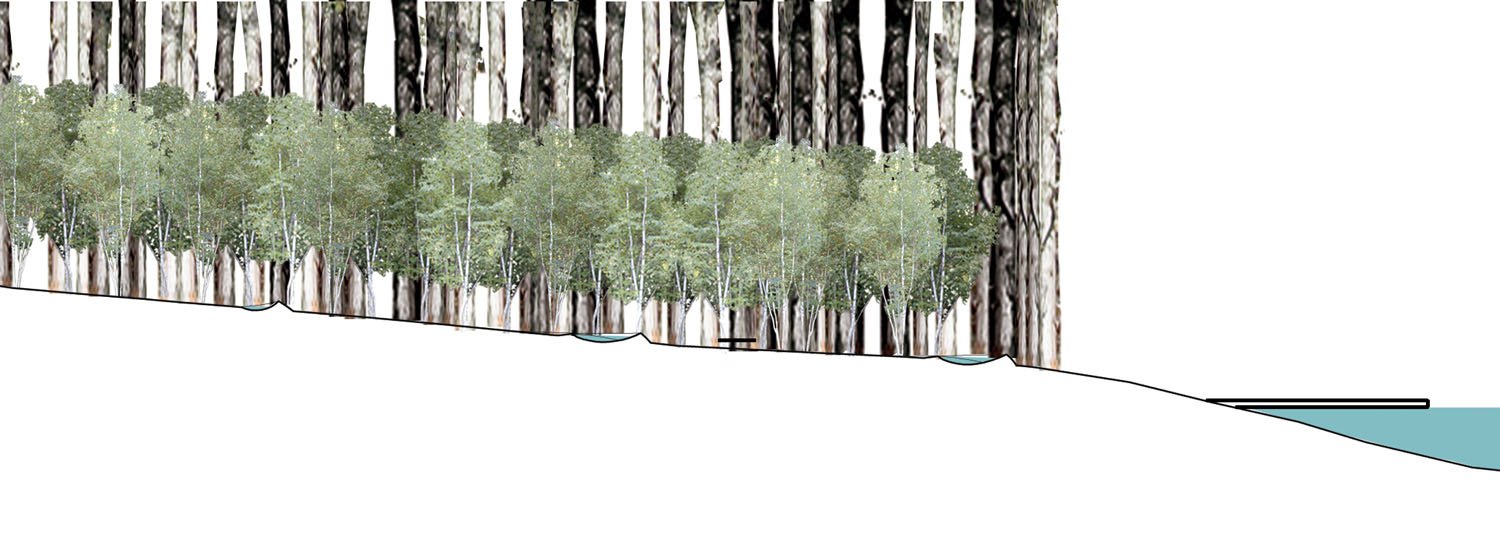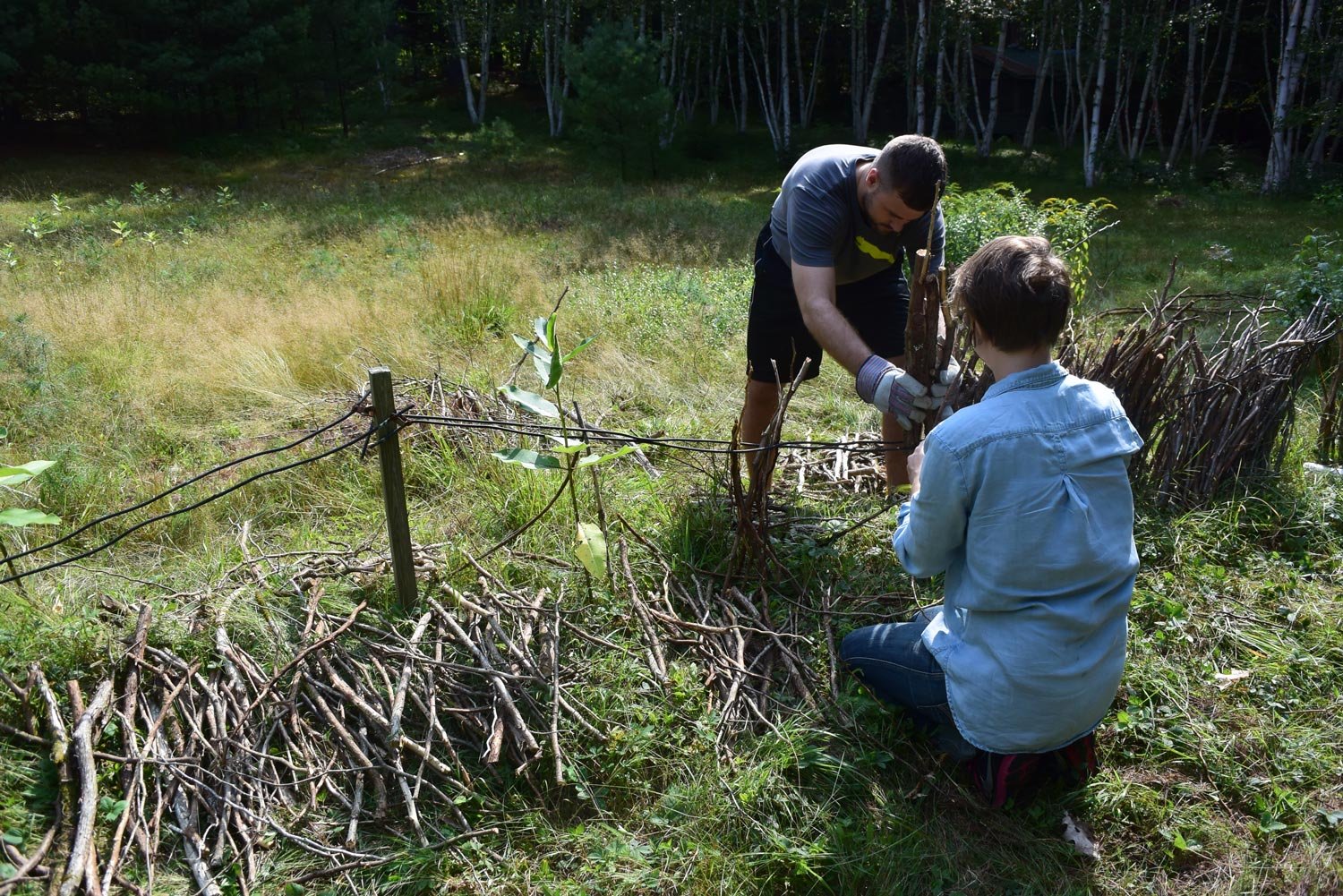Theater Group Retreat | Western Maine
Rewilding a 10 acre opening in a lakeside forest in Maine is based upon a notion of tactical succession where a variety of forest types are strategically inserted into the active process of succession and allowed to, over time, engage with the advancing parent forest in ways meant to optimize biodiversity and to encourage unique micro-climates into which subsequent interventions are then made, expanding further habitat for fauna, fowl and human occupation. The Theater Group Retreat is the culmination of a series of extensive on-site experimentation and interventions that are as much about ecological processes as they are joyful expressions of human dynamics within an expanding ecosystem. These lessons learned have been invaluable to those involved and the community who have worked diligently to rejuvenate and preserve this spectacular resource.
Client: Confidential
Size: Approximately 10 acres
Construction Budget: $100,000
Status: Master Plan Complete; Ongoing Improvements
AWARD
2009 BSLA Merit Award
2010 ASLA Honor Award
Site Plan
Strategies to remediate the deleterious effects of misuse were investigated to embrace and optimize the richness of overlapping plant communities
The Challenge
The Theater Group Retreat project began in 1993 after a prominent New York City experimental theater company purchased a lakeside parcel in western Maine. The 10-acre site had been suffering from extensive clearing and over-use, which resulted in significant erosion negatively impacting the lake below, deforestation, soil compaction, and shrinking habitat.
1940
1993
Approach
Rewilding the 10 acre opening in a Maine forest is based upon a notion of tactical succession where a variety of forest types are strategically inserted into the active process of succession and allowed to, over time, engage with the advancing parent forest in ways meant to optimize biodiversity and to encourage unique micro-climates into which subsequent interventions are then made, expanding further habitat for fauna, fowl, and human occupation. The project is the culmination of a series of extensive on-site experimentations and interventions pertaining to the protection of the lake and establishing a healthier ecosystem.
It was after 8 -10 years of the original planting and earthwork efforts that palpable and under-anticipated, symbiotic relationships between the components of the proposed design and the material of the existing site began to emerge. These interactions challenged the perceived image or the question of 'fixity' within the original design intention and served to lead the project in a more dynamic, active, and resilient direction than imagined at the start of the Framework planning exercises established years before. These observations informed subsequent interventions on the site.
Over the years, new micro-climates emerged, revealing robust scenarios comprised of complex interrelationships between parent plant communities and plant materials brought to the site. These new landscape discoveries established a landscape canvas for the residents, client, and team to tinker with and maintain. Each year new presents opportunities to manipulate nature in small ways, always with the utmost respect for the surrounding forest, the impacts of seasonal changes and successional realities.
Strategic Absorption/Hillside Re-wilding
The primary objective of the framework plan is the planned absorption of the plan itself into a larger story of succession resulting in the creation of expanded habitat territory and micro-climatic scenarios into which further tweaking is performed over time. The experience of the landscape and focus of ongoing design initiatives evolves as the site continues to evolve and as new conditions emerge. There has become a dynamic blurring between the series of interventions and the dynamics of the parent community resulting in new opportunities to interpret, wander, and tweak.
The concept for the design of the graft is predicated upon the gradual release of a designed (formal) landscape into more of a timed released renovation: that one day, the project itself, as understood in drawing form, will have almost completely vanished. The reading of the landscape is a constant play between those elements which grow and those more culturally recognizable materials and organizational strategies (grid vs random, for example). In this way both the path registers movement of the forests edge over time. In each case, the observations require a response in terms of human patterns of use and movement and a tauter relationship with ensuing habitat and habitat protection.
click below for slide show of additional images







